Today’s piece comes from Five Thirty Eight and it looks at the increasingly crowded Republican field for 2016.

Credit for the piece goes to Nate Silver.
Today’s piece comes from Five Thirty Eight and it looks at the increasingly crowded Republican field for 2016.

Credit for the piece goes to Nate Silver.
Last week’s terror attacks in Paris highlight the tension in Europe between secular Europe and those believing in Islamist values. The Economist looked at some of the available data and noted the gap between Europe’s perception of Islam and its reality. A quick figure called out for France, French respondents thought 31% of the French population to be Muslim. The reality is a mere 8%.
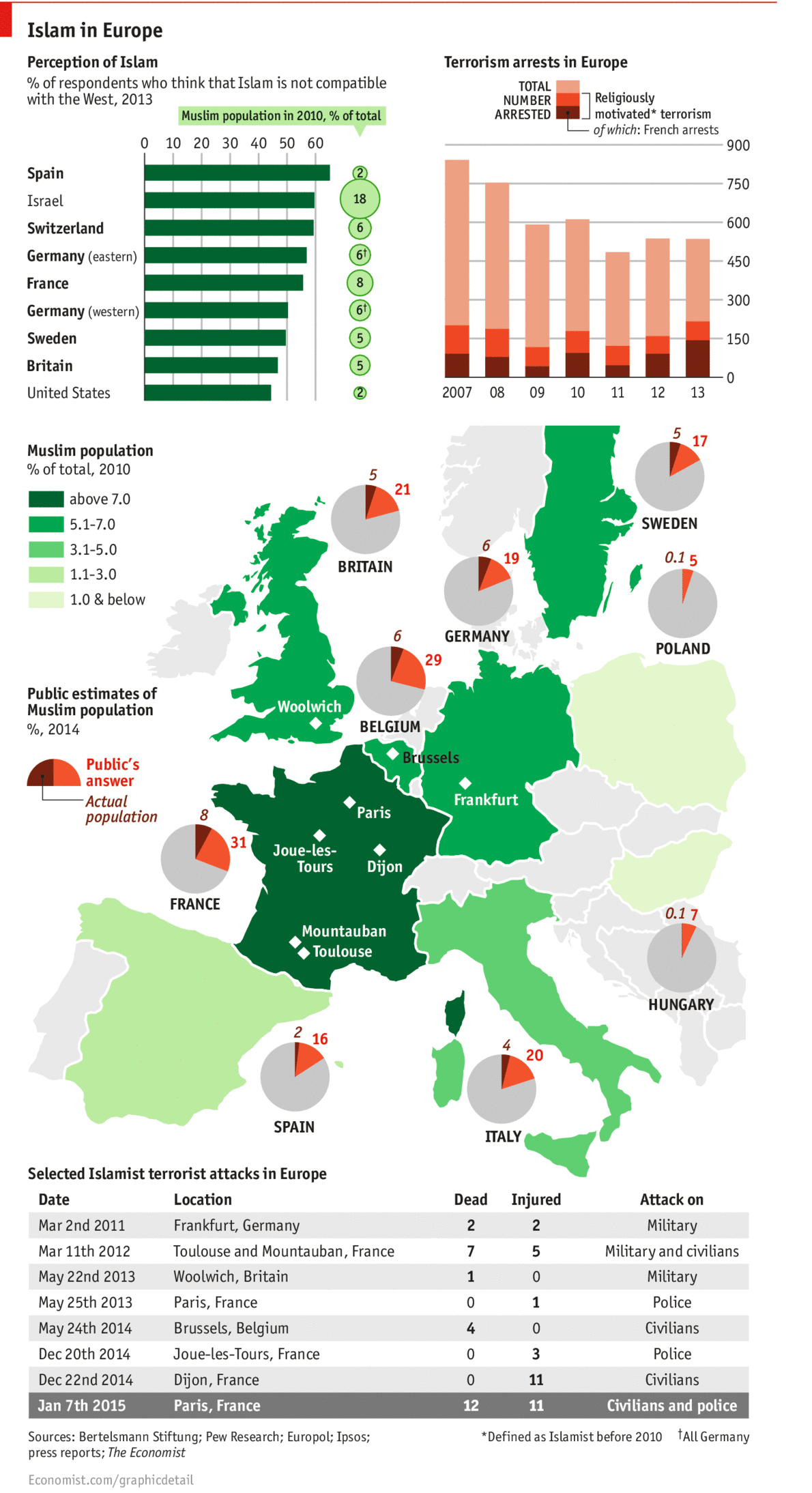
Credit for the piece goes to the Economist Data Team.
Today’s post looks at peak income for the middle class. The Washington Post looked at peak median household income for each county in the United States. And for 81% of counties, that peak was over 15 years ago.
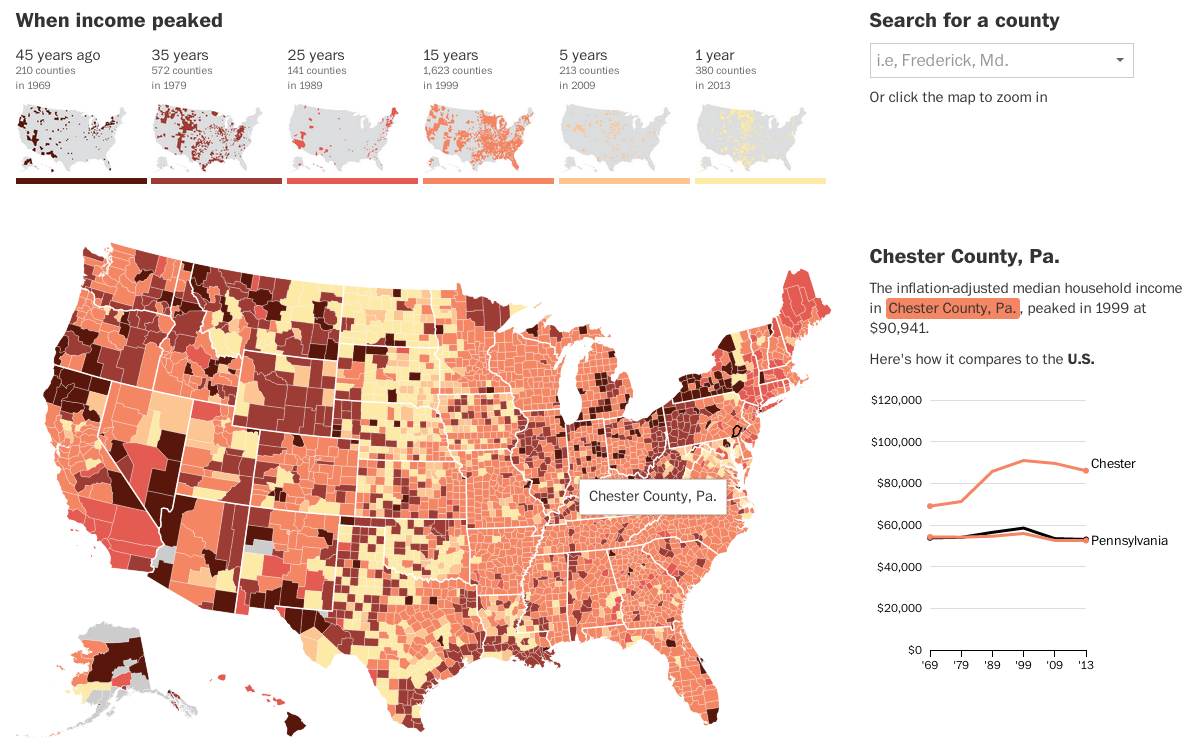
The really nice features of this piece are not actually the map, which is a standard choropleth map. Instead small multiples above the map breakdown the appearance of counties in each era bracket. And then to the right the user can compare a selected county against both the state and the United States. Overall, a very nice piece.
Credit for the piece Darla Cameron and Ted Mellnik.
Science is great. But science is also a process and scientific progress goes boink. Some of the mis-steps in chemistry have been erroneous elements. Thankfully the Boston Globe built a small periodic table of non-elements with short anecdotes about the selected few.

Credit for the piece goes to Mary Virginia Orna and Marco Fontani.
Today’s piece is an attempt by Alex Bresler to update a chart originally made by the New York Times over ten years ago.
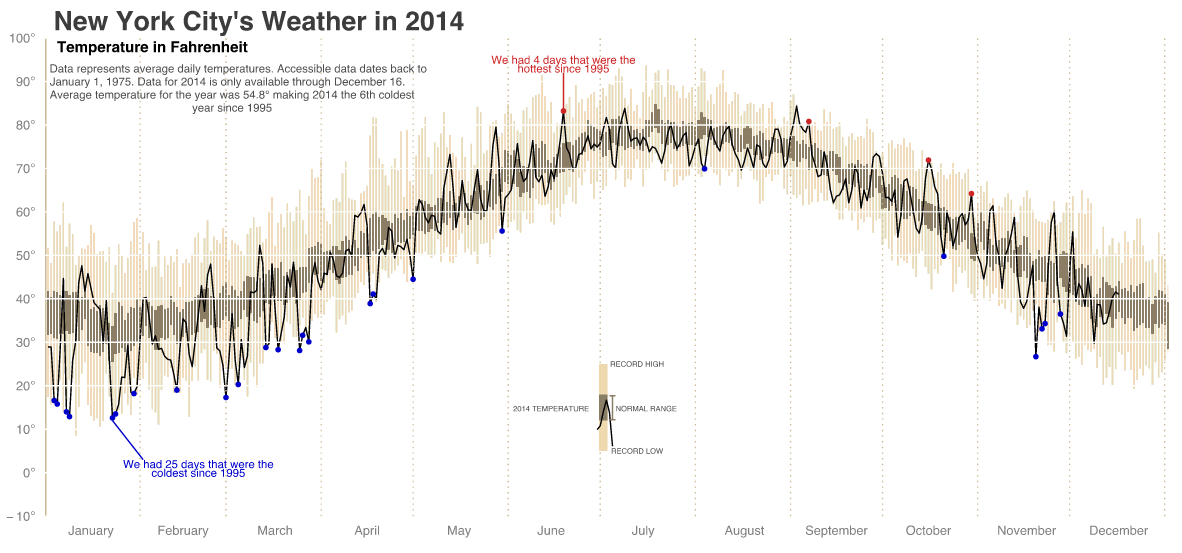
Credit for the piece goes to Alex Bresler.
The Wall Street Journal recently published an interesting article about the link between work and access to transit. They included a graphic that looked at the link between the two.
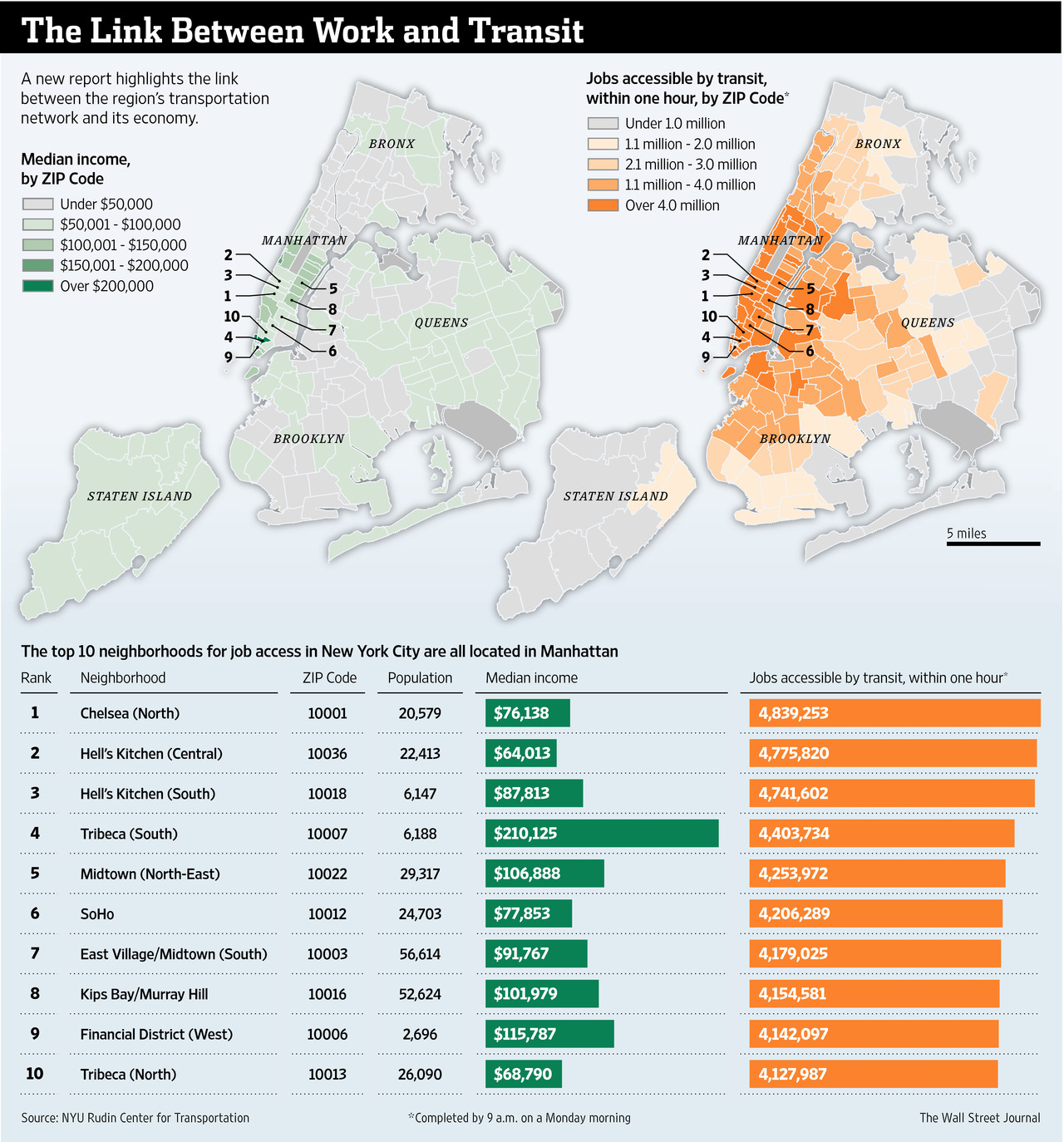
Credit for the piece goes to the Wall Street Journal graphics department.
On New Year’s Eve, well technically in the wee hours of New Year’s Day, the group with which I was spending the holiday broke out Settlers of Catan. We played that game—and drank a few bottles of champagne—until 04.00. My experience of playing the game—not necessarily the part about being inebriated on New Year’s Eve—bears out the increasing popularity of board games. This article from FiveThirtyEight seeks to understand what makes particular board games popular. And, because I am mentioning it on this blog, it has a few charts worth noting.
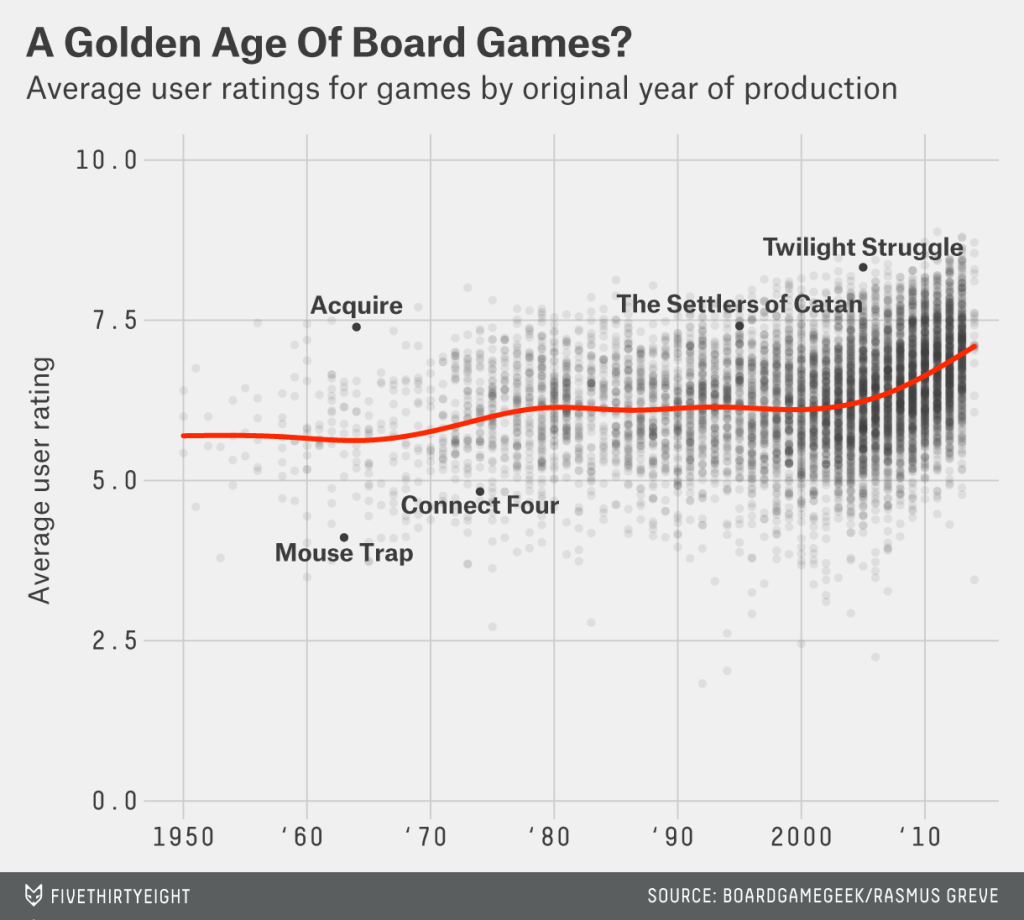
Credit for the piece goes to Rasmus Greve.
I apologise for the lack of posts over the last two weeks, but I was on holiday. Naturally, I have returned just in time for some snowstorms in the Midwest. But today’s piece comes from WGN and it explains how the type of winter precipitation that falls depends not solely on ground temperatures. Rather, temperature profiles in the upper atmosphere can make all the difference between rain, sleet, and snow.
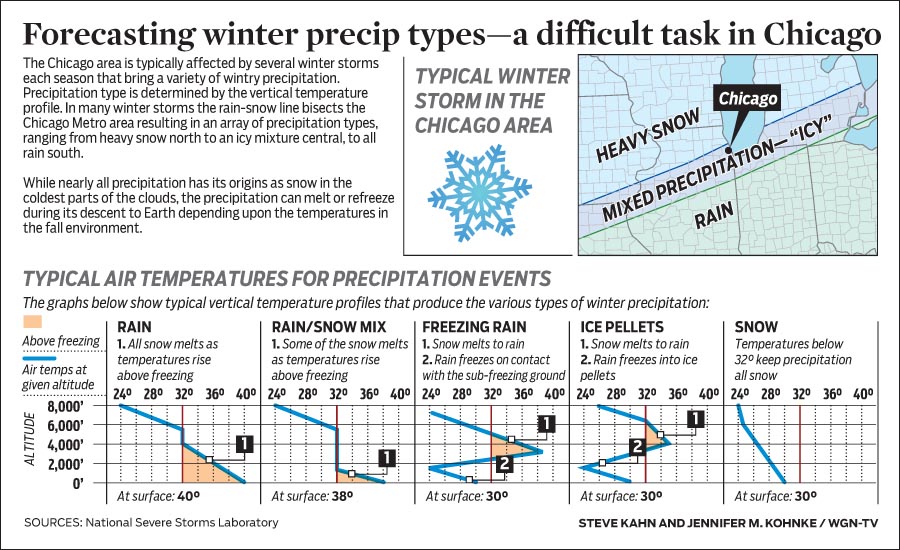
Credit for the piece goes to Steve Kahn and Jennifer Kohnke.
The Christmas holidays are known for many things. One of them is the office holiday party. Today’s post looks at a flow chart put together by the company for which I work, Euromonitor International. As it was put together by the design team, you might very well think that I had something to do with it. But I couldn’t possibly comment.

Credit for the piece goes to the Euromonitor design team.
Today’s piece is a photo I snapped of the cover of a relatively recent edition of the RedEye, a free, daily tabloid distributed in Chicago. The city of Chicago decided to raise the minimum wage in the city. And this photo of a stack of quarters depicts just how many quarters that increase will be over the next five years.

I find I usually do not enjoy data photos, for want of a better term. But here we have an obviously editorially driven graphic, but one that uses real materials to represent the data. In other words, we are not taking one quarter to represent one dollar per hour. One quarter means one quarter per hour. And the segmentations merely break out how much that will increase over the years. With minimal annotation, the photo is clear and direct.
Credit for the piece goes to Lenny Gilmore.